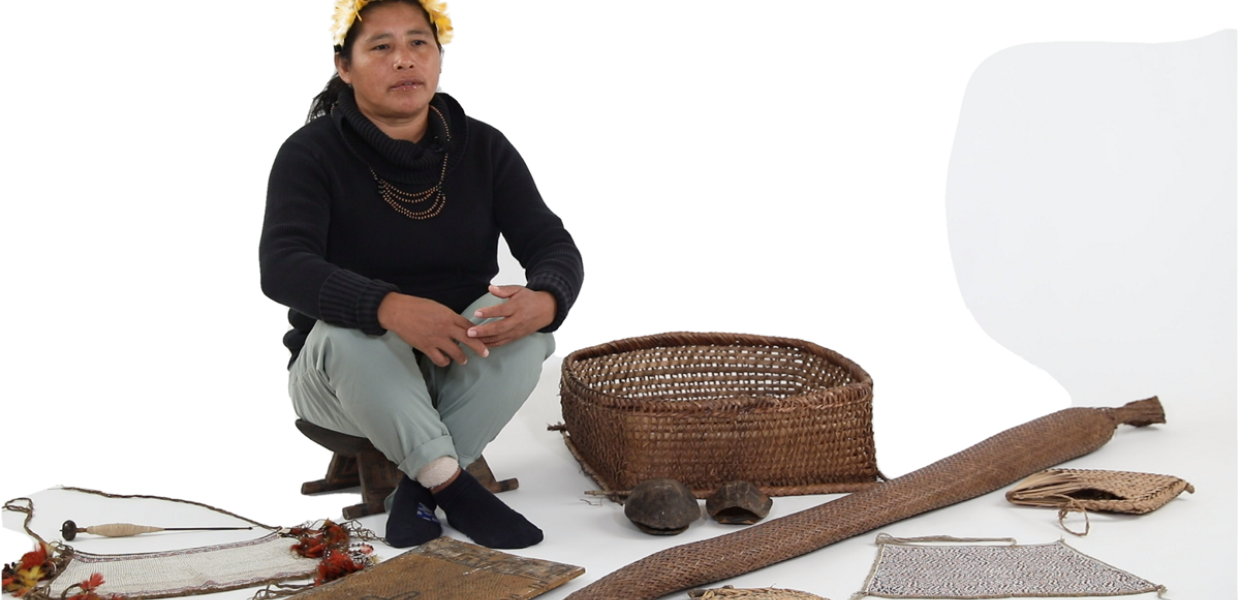Thank you for speaking to us today! Can you tell us about your institution?
The National Museums of World Culture is responsible for the non European collections in Sweden. Inside this administration there are four museums: in Stockholm, the Museum of Far Eastern Antiquities, the Museum of Mediterranean and Near Eastern Antiquities, and the Ethnographic Museum; and the Museum of World Cultures in Gothenburg.
What does your work focus on? And how was it developed?
Together, the National Museums of World Culture of Sweden and the University of Gothenburg lead a project entitled ‘Digital Repatriation of Cultural Heritage in the Global South’. This project focuses on the Swedish database for museum collections ‘Carlotta’, in particular on digital representations of objects originally belonging to indigenous communities in the Brazilian Amazon, especially Wai Wai.
In the past few months our aim has been to experiment with a tool to improve decolonisation of data, in terms of changing the balance of who is producing knowledge for and to whom. The Western idea of the archive and museological traditions that Swedish collections reflect can bring with them problems of inaccurate or problematic categorisation and the traces of racist beliefs. For example, the Carlotta database does not allow users to create new paths that link objects stored in Sweden to indigenous people and communities, to whom the project aims to give a voice as the most important stakeholders. In the image that leads this post, you can see Eliane Waiwai, telling the myth of the production of manioc through the objects. The objects were previously labelled by the function (producing manioc) but with Eliane's input we understand their relevance to history, a myth of creation. The new context is not 'only functional' but places the objects in the history of Wai Wai people.
In cooperation with scholars from the University of Brasilia, the project team started a pilot project that makes use of an open source tool developed by them - Tainacan - that allows to create digital collections on the internet, opening up new possibilities of dialogue and discussions about power in data in terms of decolonisation of collections.
What was the outcome - how can someone use it?
We worked on the report with the conviction that our experience with Tainacan could encourage new ways of co-curating and re-categorisation of cultural heritage, and open dialogue via digital means. We hope that other institutions will be able to use the tool and test it on other collections, based on our findings.
What have you learned from this experience about crowdsourcing for cultural heritage?
We have learned that while there has been much written about decolonising databases, it is not easy to find practical examples. With Tainacan and the new plug-ins created by the team it feels like we have a real opportunity to involve people through crowdsourcing. We needed a tool that can be used with bad internet, in areas with poor connection, like Amazonas in this case.
How can crowdsourcing initiatives be designed to meet the needs of researchers?
In this case it is a must. Without the involvement of researchers, we never could have the discussion inside our institution, not only because of resources, but ideologically we needed ideas coming from outside.
What are your plans for the future of the project?
We have plans to continue exploring the possibilities that were opened in this process. We have created a prototype of a database but needs to be tested by many actors. We are currently looking for funding sources, and with that we hope to develop our pilot project in a more structured way.
Thank you for telling us about the project!


